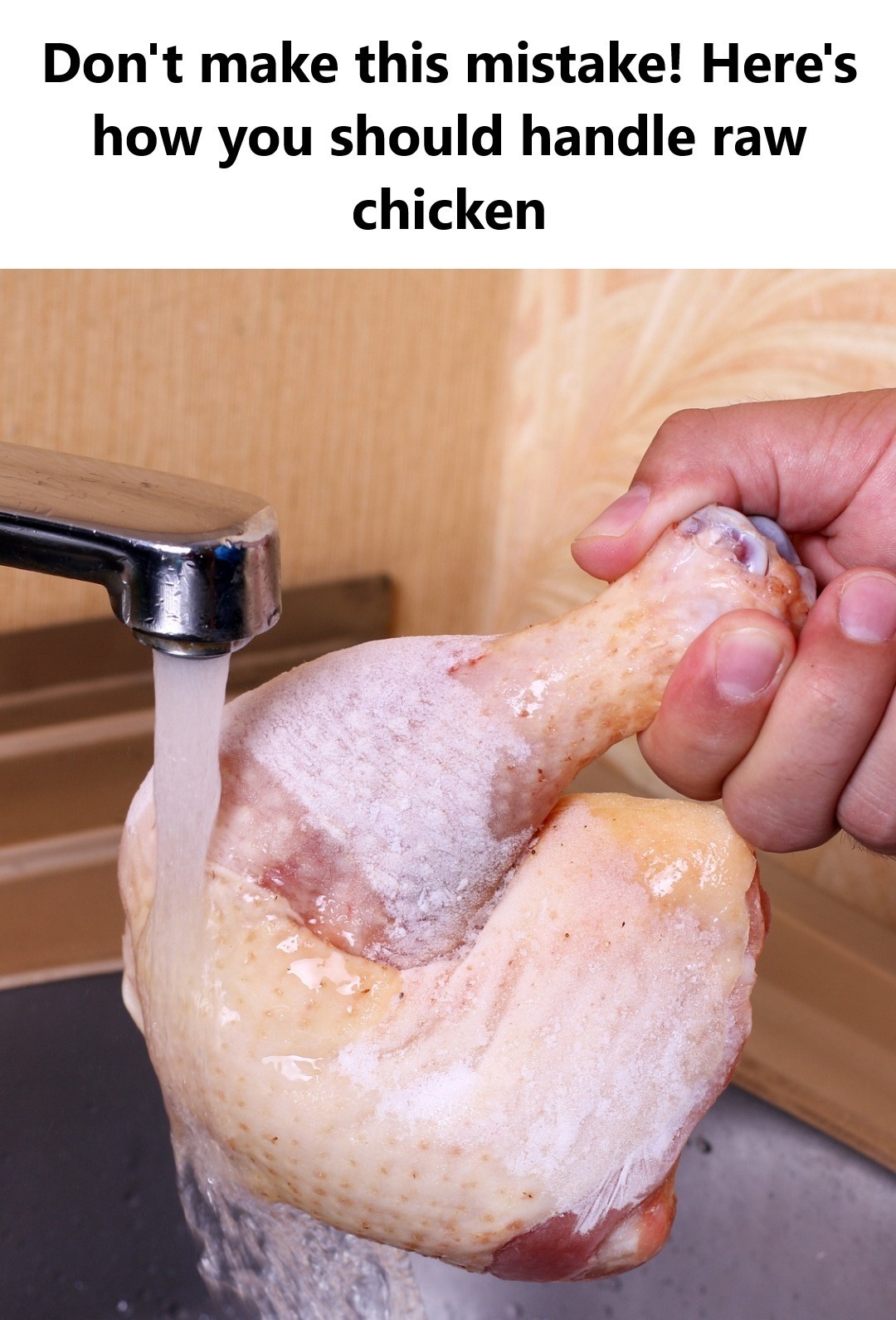ADVERTISEMENT
**Why Washing Raw Chicken Is a Bad Idea: The Safety Risks You Need to Know**
When it comes to preparing raw chicken, many people instinctively rinse or wash it before cooking. After all, it seems like a natural step to remove any dirt, blood, or other residues. However, experts and food safety organizations like the Centers for Disease Control and Prevention (CDC) and the U.S. Department of Agriculture (USDA) warn against this common practice. **Washing raw chicken** before cooking is actually a **bad idea** and can increase the risk of foodborne illness. Let’s dive into why this practice is dangerous and what you should do instead to ensure safe and delicious meals.
### The Myth of “Cleaning” Chicken
One of the main reasons people wash raw chicken is because they believe it removes harmful bacteria. It’s a common misconception that rinsing chicken helps “clean” it, but the truth is that washing it does more harm than good. Raw chicken often carries harmful bacteria such as **Salmonella** and **Campylobacter**, both of which can cause serious foodborne illnesses.
When you rinse raw chicken under water, the bacteria on its surface are not just removed—they can actually be spread to other surfaces in your kitchen through splashing water. This is called **cross-contamination**, and it can lead to the contamination of countertops, cutting boards, utensils, and even other foods.
### The Risk of Cross-Contamination
The main concern with washing raw chicken is the increased risk of cross-contamination. When you rinse chicken under the faucet, water can splash and carry bacteria to other kitchen surfaces. According to the USDA, even a small amount of water splashing can carry harmful bacteria several feet across your kitchen.
Here are a few common areas that are at risk of contamination when you wash raw chicken:
– **Countertops** and **cutting boards**: If you wash your chicken in the sink, the water droplets can land on these surfaces, contaminating them with harmful bacteria.
– **Utensils and kitchen tools**: Knives, spoons, and other utensils that come into contact with the raw chicken or its juices can pick up bacteria and contaminate the food you prepare afterward.
– **Other foods**: If you’re prepping multiple ingredients at once, such as cutting vegetables or preparing salads, raw chicken juices can transfer onto these foods and increase the chances of foodborne illness.
Even the kitchen sink itself can become a hotbed for bacteria when washing raw chicken. The sink is often where we do many food-related tasks, so it’s crucial to keep it free of contaminants.
### Why Cooking Kills the Bacteria
While washing raw chicken is not effective at removing bacteria, **cooking chicken properly** does. The most reliable way to kill harmful bacteria on chicken is by cooking it to a safe internal temperature. The USDA recommends cooking chicken to an internal temperature of **165°F (74°C)**. At this temperature, both Salmonella and Campylobacter, as well as other harmful pathogens, are killed, ensuring that your chicken is safe to eat.
Using a food thermometer is the most accurate way to check if your chicken has reached this safe temperature. Relying on visual cues like color or texture can be misleading and may result in undercooked chicken, which can still harbor dangerous bacteria.
### How to Safely Prepare Raw Chicken
Instead of washing raw chicken, follow these steps for safe preparation:
For Complete Cooking STEPS Please Head On Over To Next Page Or Open button (>) and don’t forget to SHARE with your Facebook friends
ADVERTISEMENT
